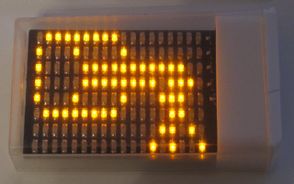TicTacLightsEnglish: Difference between revisions
ArneRossius (talk | contribs) No edit summary |
ArneRossius (talk | contribs) No edit summary |
||
| Line 26: | Line 26: | ||
* [[Media:Tictaclights-rev1.brd|PCB Layout]] (Eagle file, version 4.16) | * [[Media:Tictaclights-rev1.brd|PCB Layout]] (Eagle file, version 4.16) | ||
* [[Media:Tictaclights-instructions-rev1.pdf|Construction kit instructions]] | * [[Media:Tictaclights-instructions-rev1.pdf|Construction kit instructions]] | ||
== Alternative Power Supplies == | |||
* [[:Image:TTL-LM317.png|LM317L Voltage Regulator]] for power sources between 5V and 9V (e.g. USB port). | |||
* [[:Image:TTL-MCP1702.png|MCP1702 Voltage Regulator]] for power sources between 3.7V and 9V (e.g. lithium-polymer battery). | |||
* [[:Image:TTL-LP2950.png|LP2950 Voltage Regulator]] for power sources between 3.7V and 9V (e.g. lithium-polymer battery). | |||
[[Category:Projects]] | [[Category:Projects]] | ||
[[Category:BlinkenPlusProjects]] | [[Category:BlinkenPlusProjects]] | ||
Revision as of 15:16, 20 January 2013
| project overview | |

| |
| Year | 2012 |
| Number of pixels | 144 |
| Grayscales / Colors | 8 Grayscales |
| Illuminant | SMD LEDs (size 0805) |
| Power input | |
| Contact person | Arne Rossius |
| Project website | |
The TicTacLights is a very small BlinkenLights clone which fits inside a small TicTac box. It is powered by a CR2032 button cell battery. Battery life is only about 30 minutes, alternatively a lithium-polymer battery with an additional voltage regulator can be used.
This project uses the BlinkenPlus firmware on an ATmega8515 controller. The PCB has pads for a Micro-SD card slot and solder pads for a serial port (with external level converter, e.g. MAX3232).
The kit sold at 29C3 has a wrong setting for the low fuse byte. The correct setting is 0xFF (all bits not programmed). The fuse bytes can be changed with an AVR programmer and an external 5V supply (remove SD card before applying power!).
Hardware
The hardware is kept very simple because there isn't a lot of space on the PCB. The columns are directly connected to the controller's outputs, so large currents are not possible. Due to the high internal resistance of the button cell battery, the voltage drops quickly, causing the controller and the SD card to operate outside of their specifications (which requires a minimum voltage of 2.7 V).
- Schematic
- Schematic (Eagle file, version 4.16)
- PCB Layout (Eagle file, version 4.16)
- Construction kit instructions
Alternative Power Supplies
- LM317L Voltage Regulator for power sources between 5V and 9V (e.g. USB port).
- MCP1702 Voltage Regulator for power sources between 3.7V and 9V (e.g. lithium-polymer battery).
- LP2950 Voltage Regulator for power sources between 3.7V and 9V (e.g. lithium-polymer battery).